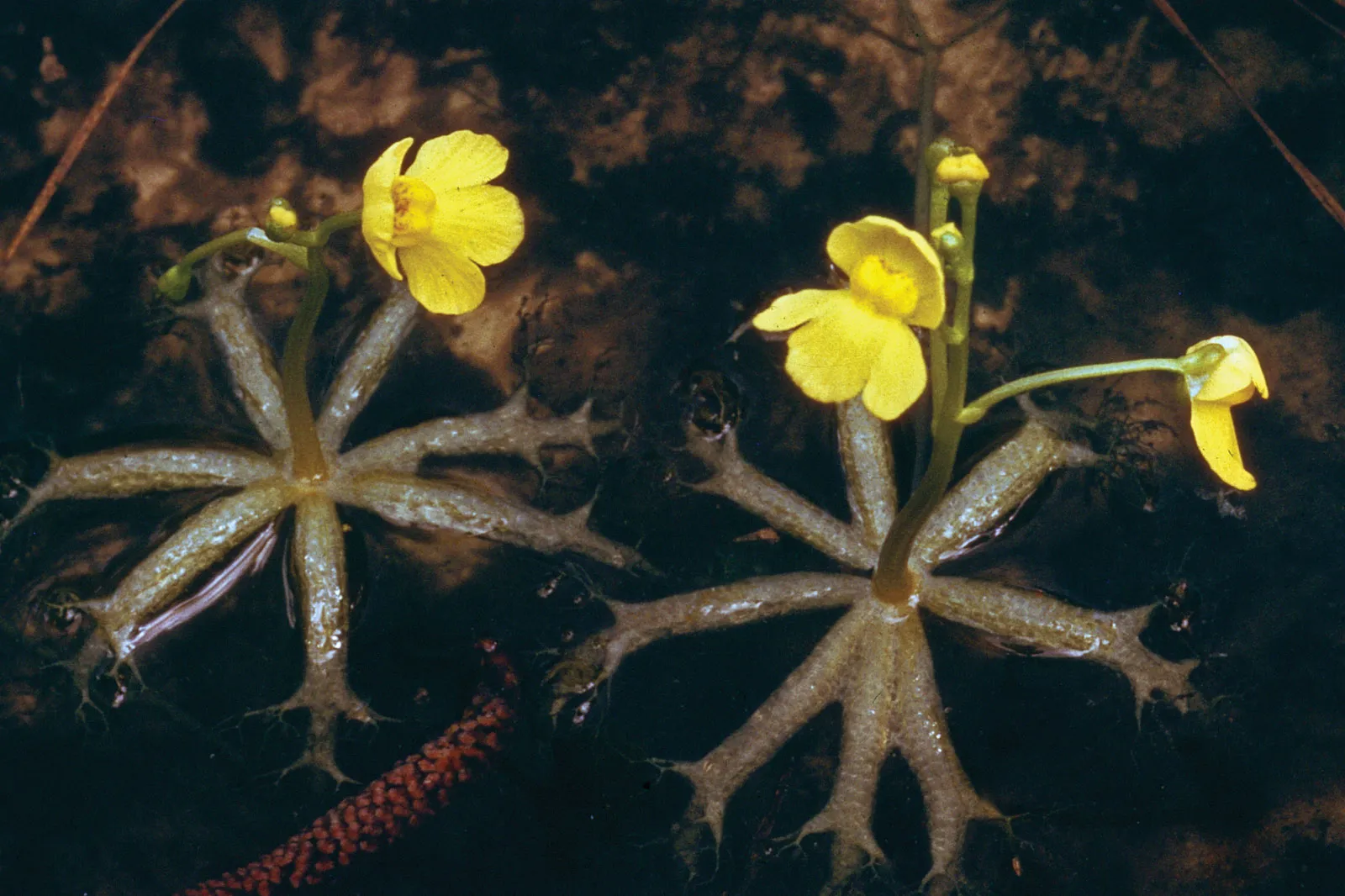
Bladderwort
Utricularia spp.
Basic Information
🌿 Family: Lentibulariaceae🗺️ Zone: 4-10
Other Names:
- Bladderworts
🌡️ Ideal Temperature : 60°F – 85°F
🔥 Heat Tolerance: Up to 100°F
❄️ Cold Tolerance: Down to 30°F
🌱 Type: Perennial
Layers
- Aquatic
Functions
- Water Purifier
- Pest Management
Pests
No pests associated with this plant.
Companions
- Water Lily
- Pickerelweed
Plants to Avoid
- None
Description
Bladderworts are a genus of carnivorous plants consisting of over 200 species, found in aquatic and wetland habitats worldwide. They lack traditional roots and possess highly divided, underwater leaf-like stems equipped with small hollow sacs, or "bladders." These bladders actively capture and digest tiny animals such as insect larvae, aquatic worms, and water fleas through a suction mechanism, making them one of the fastest known plant movements. The flowers, which grow above water, are typically yellow and two-lipped with a forward-facing spur on the lower lip, resembling snapdragons. This unique carnivorous adaptation allows bladderworts to thrive in nutrient-poor environments by obtaining essential nutrients from their prey.
🌞💧 Sun and Water Requirements:
Thrive in full sun to partial shade. Require nutrient-poor, acidic water; commonly found in lakes, streams, and waterlogged soils.
✂️🫘 Methods to Propagate:
Propagation occurs through seed dispersal or fragmentation. Seeds can be sown in suitable aquatic environments, while plant fragments can develop into new individuals.
🧑🌾👩🌾 When to Harvest:
Not typically harvested, as bladderworts are primarily valued for their ecological roles in aquatic ecosystems.
Purpose
- **Water Purifier**: Captures and digests microorganisms, aiding in maintaining water quality.
- **Pest Management**: Controls populations of small aquatic organisms, contributing to ecological balance.